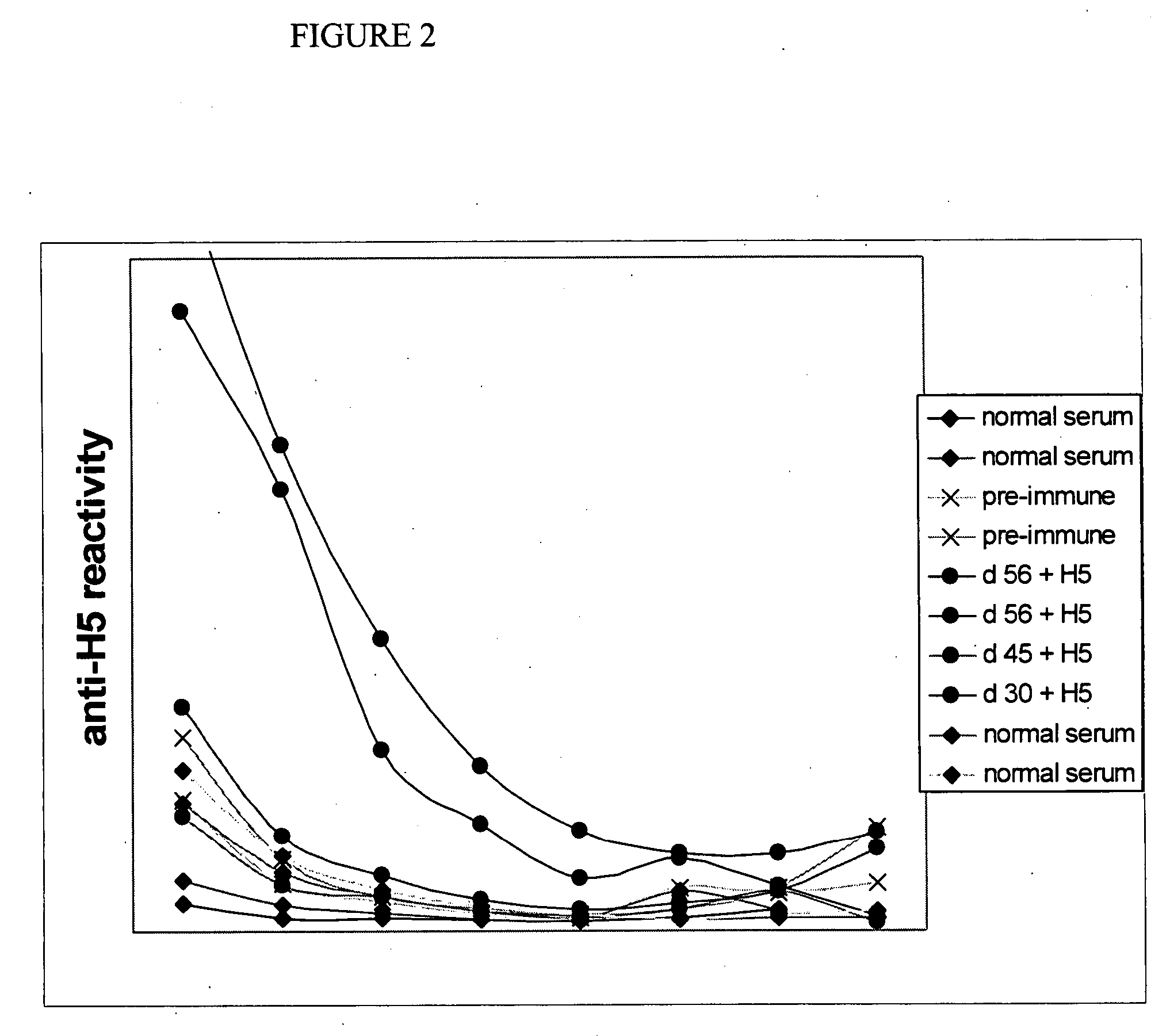Bacteriophage DNA vaccine vector
a technology of dna vaccine and bacteria, applied in the field of influenza vaccines, can solve the problems of mutated dna/rna, limited prophylactic and therapeutic vaccine development and deployment, and the inability to quickly spread between people, so as to improve the host immune response, improve the potential interaction with cells, and increase the local concentration
- Summary
- Abstract
- Description
- Claims
- Application Information
AI Technical Summary
Benefits of technology
Problems solved by technology
Method used
Image
Examples
example
[0035] Avian Influenza H5 sequence was obtained from Genbank (AY651330 A / bird / Thialand / 3.1 / 2004 (H5N1) HA). (Li, K. S. et al., Genesis of a highly pathogenic and potentially pandemic H5N1 influenza virus in eastern Asia. Nature 430 (6996), 209-213 (2004)) The virus was characterized at Queen Mary Hospital in Hong Kong and reported in a manner typical of emerging pathogens.
[0036] The complete H5 gene was synthesized and the gene product cloned into a pJ4:G03267 plasmid. The fragment had the expected size by agarose gel electrophoresis, and was sequenced in both directions to confirm identity.
[0037] The H5 DNA was inserted into lambda bacteriophage (Uni-ZAP XR Vector Kit and Gigapack cloning kit from Stratagene) by EcoR I excision of the fragment and ligation into the phage.
[0038] The sequence of the inserted sequence was confirmed by PCR and DNA sequencing. The DNA was packaged into phage heads and grown in E.Coli on LB plates. Plaques were picked and expanded in LB broth, extract...
PUM
| Property | Measurement | Unit |
|---|---|---|
| volume | aaaaa | aaaaa |
| time | aaaaa | aaaaa |
| concentration | aaaaa | aaaaa |
Abstract
Description
Claims
Application Information
 Login to View More
Login to View More - R&D
- Intellectual Property
- Life Sciences
- Materials
- Tech Scout
- Unparalleled Data Quality
- Higher Quality Content
- 60% Fewer Hallucinations
Browse by: Latest US Patents, China's latest patents, Technical Efficacy Thesaurus, Application Domain, Technology Topic, Popular Technical Reports.
© 2025 PatSnap. All rights reserved.Legal|Privacy policy|Modern Slavery Act Transparency Statement|Sitemap|About US| Contact US: help@patsnap.com



